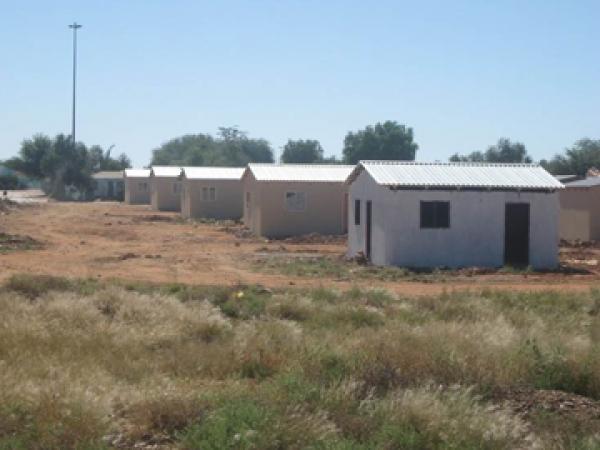MK veterans and Upington 26 murder trialists claim exceptionalism

In Upington, 40 four-roomed RDP-size houses reserved for ex-political prisoners and MK veterans were occupied in the course of 2013. None of the occupiers have to date paid for municipal services and some are subletting their properties.
“We can’t be treated like other people,” says Kenneth Khumalo, ex-death row inmate who was part of the ‘Upington 26’, a murder trial of 26 individuals charged under the common purpose doctrine for the alleged killing of a police officer in 1985.
Khumalo says: “[The] Upington 26 project is a special project. A political project is not subject to normal administrative processes. It’s a provincial project. Administrative regulations in a political project don’t work.”
The premier’s office would not confirm Khumalo’s assertion that the houses are a ‘heritage gift’ for the Upington 26. Senior manager of communication Bronwyn Thomas-Abrahams said she didn’t have any information and was going to check with her colleagues.
But minutes of the local //Khara Hais municipality confirm that rental units were meant as a “special project of the premier… to give recognition for their [the Upington 26] role in the liberation struggle”.
“They [municipality] could not put together a policy; their escape route was to make it rental stock,” claims Khumalo.
The Department of Co-operative Governance and Traditional Affairs (COGTA) funded the building of the rental units.
Director of human settlements Robert Gladile says the “rental units in Paballelo are for an economic injection for the municipality to generate revenue that can be used for other development.”
The 40 beneficiaries are meant to pay a flat rate of only R100 per month. Such an arrangement seems to undermine the claim to generate revenue.
The rental contracts also explicitly prohibit the subletting of the units, but some beneficiaries have sublet the properties.
Khumalo says, “The arrangement is between two people.”
GroundUp spoke to two tenants. Grace Mzola, who stays with her sister, pays a rent of R1,600 per month. Another tenant, Anthea Malgas, says she rents at R1,500 per month and may be there for the duration of her studies at Vaal University of Technology until 2016.
“There are a few things short,” says subtenant Malgas of the house she shares with Prudence Vermeulen. Her view is that it is the responsibility of the landlord to fix the property.
“The quality of the houses is bad,” says Khumalo. “Wind gets in by the roof. I had to redo the toilet. There is no fencing.” He says there is only one wall plug per house. He believes the units don’t meet the provincial guidelines of how a rental unit should be.
When asked about the criteria for allocating the units, Gladile said the municipality decided on that. And yet the minutes of the municipality show that he was the one tasked with addressing the criteria for allocation.
Of 81 houses built, 40 are reserved for the political beneficiaries. On the list, 18 of the 26 trialists appear.
Nontuthuzelo Madlongolwana, daughter of one of the accused, the late Eveline de Bruin, is struggling to understand the allocation. She says she understood the housing included those who have since passed away. Together with her mother, they had agreed her son would inherit one of the houses.
“You can’t make a bequest for someone who already died. It is clear in law,” says Khumalo.
Khumalo claims the houses were intended for the Upington 26, but then “people with political interest got involved.”
“Because the land was bigger it was decided to build more houses” and to include MK veterans.
When an MK veteran and task team member who is negotiating with the municipality was asked if they weren’t denying people who needed houses, given that most of the veterans had received houses already, he said: “I can’t talk on behalf of broader society. The project was to give recognition to our role.” He wished to remain anonymous.
Support independent journalism
Donate using Payfast

Don't miss out on the latest news
We respect your privacy, and promise we won't spam you.
Next: Residents complain of potholes in Khayelitsha
Previous: Thuli Madon-Yoda

This article is licensed under a Creative Commons Attribution-NoDerivatives 4.0 International License.
